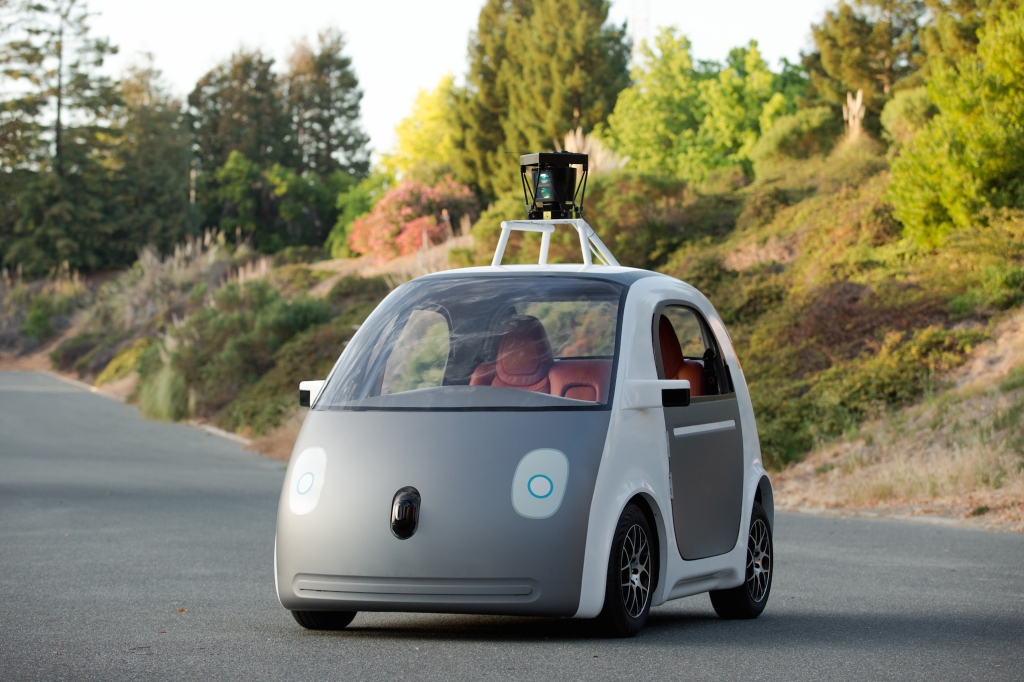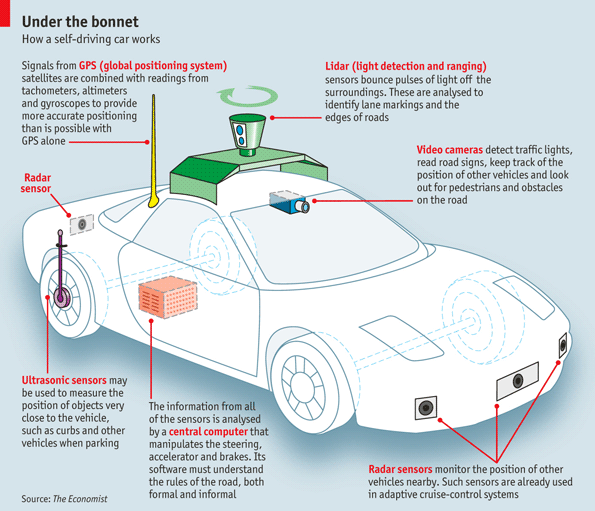We’ve all seen the movies, how in the “future” we will all have hoverboards (like the ones in Back To The Future 2) and flying cars. They also show that we won’t actually have to drive our cars either because they’ll be able to drive themselves as we kick back and relax.
While we still might be a long way from flying cars, we’re closer than you think with self-driving cars. Some aspects of self-driving cars are already available on certain vehicles. Options like lane assist, adaptive cruise-control, self-parking and rear proximity sensors.
Let’s take a look at some of the technology behind self-driving cars.
Self-driving cars use a combination of cameras, sensors, as well as special software.
One of the technologies that Google uses in their self-driving cars is called Lidar. It stands for light detection and ranging. It essentially creates a 3D map, so the car will be able to detect potential hazards by bouncing a laser beam off of surfaces near the car, so it can tell how far the car is from those objects. Think of it like a digitized measuring tape.
While the Lidar system is good for mapping out areas surrounding the car, it isn’t good at accurately determining the speed of other vehicles in real-time.
This is where the radar units, that are attached to the car’s bumpers, come into play. There are usually two radar sensors in each bumper.
These sensors can help the car avoid an impact with another vehicle or object. The sensors talk to the on-board computer by sending a signal to let it know when to apply the brakes before it collides with an oncoming car. It can also tell the car to steer out of the way of an object on the road to avoid an accident.
Some self-driving car technologies are using high-powered cameras in their setups. The cameras can see the car’s surroundings up to 30 metres away.
Another piece of technology that is used in self-driving cars is GPS (Global Positioning System). This is the same technology that is already in use for in-car navigation systems or on your smartphone. While a current GPS is accurate to within 4 metres, efforts are being made to improve GPS accuracy to within a centimetre, by making use of ground-based reference points in addition to satellite data.
All of the data from the Lidar, radars, sensors, cameras and GPS gets processed in real-time by sophisticated software, which runs on a powerful on-board computer. It is the computer that manipulates the car’s steering, acceleration and brakes.
So, where is General Motors when it comes to self-driving cars?
GM has announced that its Canadian Regional Engineering Centre in Oshawa will help play a leading role by building a fleet of self-driving 2017 Chevrolet Volts. The vehicles will be part of a bigger test program at the GM Technical Center in Warren, Michigan.
Employees at the Tech Center in Warren will be able to reserve one of the Volts using a car-sharing app, then select a destination. The self-driving car will be able to take them to their destination and then park itself.
To help improve upon the self-driving car technologies that GM has developed so far, GM announced in March 2016, that it was acquiring Cruise Automation, a San Francisco-based developer of autonomous vehicle technology.
So why the push for self-driving cars? The main reason is safety. Over 30,000 people a year die in car crashes in the U.S. and Canada. Approximately 1.25 million people die worldwide every year due to car accidents and an additional 20-50 million are injured or disabled.
“GM’s commitment to autonomous vehicles is inspiring, deliberate, and completely in line with our vision to make transportation safer and more accessible,” said Kyle Vogt, founder of Cruise Automation.
While there may be many people who will still prefer to drive their own cars, self driving cars are definitely in our future. Are you ready?


Leave a comment